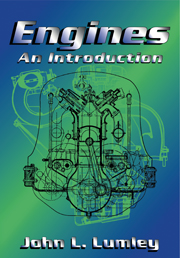Preface
Published online by Cambridge University Press: 05 June 2012
Summary
As soon as the steam engine was developed in the early 19th century, people started to think about some sort of road vehicle. Early attempts were steam powered and had various engine and boiler positions and arrangements of road wheels. The development of the much more compact spark-ignition internal-combustion engine toward the end of the century made possible a horseless carriage configuration. By about 1910, the automobile had taken a recognizably modern shape. The engine, in particular, has not changed much in basic design since that period. Of course, there are various forms of engine (for example, various arrangements of the valves), having different characteristics. These different forms represented innovations when first proposed. Some of them stood the test of time, and the unsuccessful ones disappeared without a trace. Some uncommon ones (for example, desmodromic valves, which we shall discuss later) keep reappearing from time to time. There is very little new in engines today. For example, around the time of the First World War the enthusiast driver could buy a Frontenac aftermarket cylinder head conversion for his Model T Ford, giving it chain-driven double overhead cams (DOHC) with four valves per cylinder. These are innovations we think of as modern. In [3] we find the statement “OHC engines are more efficient than their predecessor pushrod… engines,”which indicates that it was written by a young person (although to be fair we must admit that DOHC engines with four valves per cylinder at first appeared largely in racing and exotic cars).
Information
- Type
- Chapter
- Information
- EnginesAn Introduction, pp. xi - xviPublisher: Cambridge University PressPrint publication year: 1999
